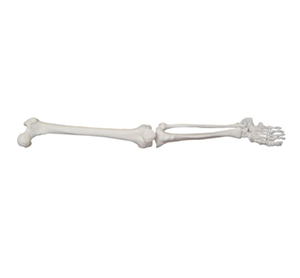

Article tag: Lower limb bone model| human bone model|
In the broad stage of medical education and clinical practice, lower limb bone model is gradually showing its indispensable value. As a bridge between theory and practice, lower limb skeletal model not only provides intuitive learning t...
In the broad stage of medical education and clinical practice, lower limb bone model is gradually showing its indispensable value. As a bridge between theory and practice, lower limb skeletal model not only provides intuitive learning tools for medical students, but also provides valuable practical AIDS for clinicians.
Through the fine manufacturing process and highly simulated design, the shape characteristics, connection mode and movement trajectory of the lower limb bones can be accurately reproduced. This three-dimensional presentation not only enables learners to visually observe every detail of the lower extremity bones, but also to deeply explore the relationship between the structure and function of the lower extremity bones through touch, comparison and simulation operations.

In clinical practice, the value of lower limb bone model is more prominent. For orthopedic doctors, rehabilitation therapists and other clinical professionals, it is not only a useful assistant to learn anatomy, but also an important reference for clinical operations such as surgical planning and rehabilitation training. Through the simulation operation on the model, doctors can more accurately assess the risk of surgery and make surgical plans, so as to improve the success rate of surgery and the recovery effect of patients.
In addition, it is highly customizable and scalable. According to different learning needs and teaching objectives, the model can be personalized, such as adding specific pathological changes, simulating different treatment scenarios, etc. This flexibility not only improves the applicability of the model, but also provides clinicians with richer practical opportunities and learning experiences.
In summary, lower limb bone models play an important role in assisting clinical practice. By combining complex anatomical structures with intuitive three-dimensional models, it provides learners with a comprehensive, in-depth and actionable learning platform. Through the learning and practice of this platform, clinicians can not only deeply understand the structure and function of lower limb bones, but also improve clinical operation skills and coping ability.